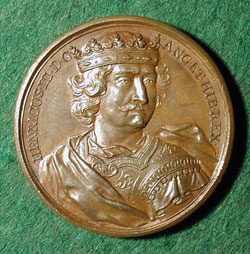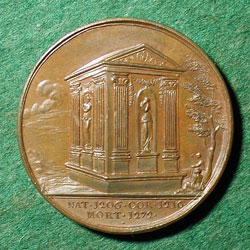

|
HENRY III |
|
|
Henry III (1207-1272) (King of England from 1216 to 1272) was the elder son and heir to John, who died when Henry was 9 years old. Although he gained the throne in 1216, Henry did not actually rule until 1227. His abuses of royal power conflicted with the Magna Carta, and this, coupled with the influence of foreigners on his administration, antagonized the nobles. He was forced to accept the Provisions of Oxford and Westminister, which gave more power to his councillors. However, he renounced the provisions in 1261, provoking the Barons’ War. The leader of the barons, Simon de Montfort, captured Henry at Lewes in 1264 and took control. However, Henry’s son, the future Edward I, defeated Montfort at the Battle of Evesham in 1265 and effectively ruled on his father’s behalf thereafter. (O’ Brien) |
|